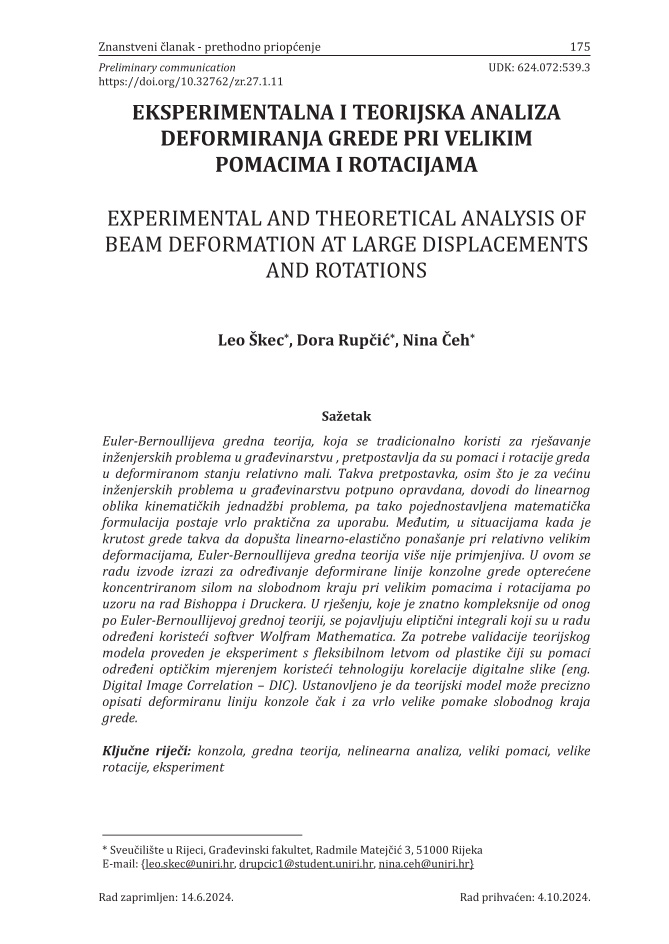Eksperimentalna i teorijska analiza deformiranja grede pri velikim pomacima i rotacijama
##plugins.themes.bootstrap3.article.main##
Sažetak
Euler-Bernoullijeva gredna teorija, koja se tradicionalno koristi za rješavanje inženjerskih problema u građevinarstvu , pretpostavlja da su pomaci i rotacije greda u deformiranom stanju relativno mali. Takva pretpostavka, osim što je za većinu inženjerskih problema u građevinarstvu potpuno opravdana, dovodi do linearnog oblika kinematičkih jednadžbi problema, pa tako pojednostavljena matematička formulacija postaje vrlo praktična za uporabu. Međutim, u situacijama kada je krutost grede takva da dopušta linearno-elastično ponašanje pri relativno velikim deformacijama, Euler-Bernoullijeva gredna teorija više nije primjenjiva. U ovom se radu izvode izrazi za određivanje deformirane linije konzolne grede opterećene koncentriranom silom na slobodnom kraju pri velikim pomacima i rotacijama po uzoru na rad Bishoppa i Druckera. U rješenju, koje je znatno kompleksnije od onog po Euler-Bernoullijevoj grednoj teoriji, se pojavljuju eliptični integrali koji su u radu određeni koristeći softver Wolfram Mathematica. Za potrebe validacije teorijskog modela proveden je eksperiment s fleksibilnom letvom od plastike čiji su pomaci određeni optičkim mjerenjem koristeći tehnologiju korelacije digitalne slike (eng. Digital Image Correlation – DIC). Ustanovljeno je da teorijski model može precizno opisati deformiranu liniju konzole čak i za vrlo velike pomake slobodnog kraja grede.
##plugins.themes.bootstrap3.article.details##

Ovaj rad licenciran je pod Creative Commons Attribution-NonCommercial-NoDerivatives 4.0 International License.
Sadržaj časopisa u cijelosti je besplatno dostupan. Korisnici smiju čitati, preuzimati materijal i dijeliti ga s drugima pod uvjetom da na odgovarajući način citiraju izvornik, te da ne mijenjaju ili na drugi način koriste materijal u komercijalne svrhe, u skladu s CC BY-NC-ND licencom Creative Commons (CC) licencom.

